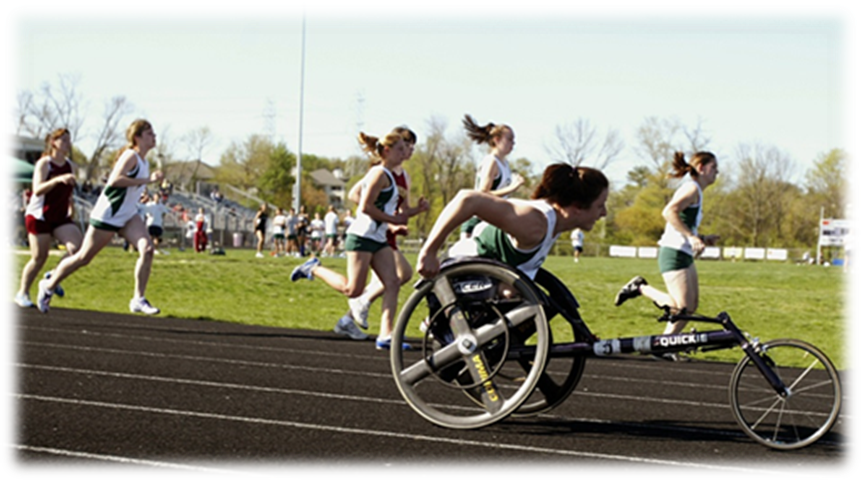Section 504 of the Rehabilitation Act of 1973 states that "no qualified individual with a disability in the United States shall be excluded from, denied the benefits of, or be subjected to discrimination under" any program or activity that receives Federal financial assistance. Section 504 covers every student with a disability. For example, students who use a wheelchair but do not have any other limitations will often fall under Section 504. Simply stated, this law stipulates that whatever is provided for individuals without disability must also be provided for individuals with disability. For example, if other students in your school without disability are provided with a physical education class, then students with disability must be provided with a physical education class as well. This law applies to all schools that receive Federal funding. There are very few schools, including private schools, which do not receive some form or forms of Federal financial assistance; therefore, almost all schools are required to comply with this law.
There are two additional disability laws and guidance’s of which you should be aware:
- Individuals with Disabilities Education Act (IDEA, which includes Individualized Education Plans(IEPs))
- Office of Civil Rights (OCR) Dear Colleague Letter: Students with Disabilities in Extracurricular Activities
It is important for you to be aware of all three and the implication they have on your classroom.
Individuals with Disabilities Education Act (IDEA): Requires public schools to make available to all eligible children with a disability a free appropriate public education in the “least restrictive environment” alongside their peers without disability as is appropriate to their individual needs. Least restrictive environment is defined by the law as:
“to the maximum extent appropriate, children with disabilities… are educated with children without disabilities, and that special classes, separate schooling, or other removal of children with disabilities from regular education environments occur only when the nature or severity of the disability is such that education in regular classes with the use of supplementary aids and services cannot be achieved satisfactorily.” Federal Register, August,1977, p. 42497
As a physical educator it is incumbent upon you to ensure that a student with a disability will not be functionally excluded from your class or asked to do something different than the rest of the class due to the disability. An example of functional exclusion may be assigning the student with the disability to keep score while all other students are playing a game, or to play in the corner with his or her aid instead of playing with other students. It is your charge as their physical educator to learn about and create opportunities for play in the least restrictive environment possible.
OCR Dear Colleague Letter: While this does not specifically speak to physical educator, it is good to be aware of as it affects athletic opportunities in all schools and may affect the goals and outcomes of some of your students. On January 24, 2013, the Office for Civil Rights (OCR) issued a Dear Colleague Letter clarifying schools’ obligations under the Rehabilitation Act of 1973 to provide extracurricular athletic opportunities for students with disability. The release of the Dear Colleague Letter is not a new law but rather further guidance on what should already be provided for students with disability stemming from Section 504 of the Rehabilitation Act. The purpose is solely to clarify schools’ responsibilities under the law and does not provide any additional legislation. Similar to Title IX, which paved the way for women to have equal opportunity in sports, the further guidance will hopefully lead to similar outcomes for student athletes with disabilities.

